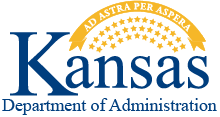Explanation of Section II Costs
These are central service costs which are billed. Section II costs include those that are generally more easily measured and are usually based on demand usage by the agency. This is any central service cost which user agencies actually pay in one form or another. Examples include interfund vouchers for: telephone and computer services, building rent, and payroll assessments, such as Workers' Compensation Insurance, Unemployment Compensation Insurance, etc.
For those central services directly billed to user agencies, a rate is established to recover the full cost of the operations of a particular central service cost center. However, the Uniform Guidance (UG) under OMB 2 CFR Part 200 disallows certain costs from federal reimbursement. For this reason, as well as other UG reconciling factors, and State of Kansas funding policy, there are normally differences between the full (and actual) cost of a central service operation and what is allowed under the UG. To account for this difference, Kansas implemented a "dual rate" structure for certain central service cost centers. A "federal rate" is calculated under UG guidelines, separate from the "state rate" which provides for full cost recovery. Thus, for a particular user agency only the allowed (federal rate) portion of the amount billed can be paid by federal dollars. If an agency does not have federal funds, the full cost, or "state rate", may be paid from any other funding source available (generally either the state general fund or a fee fund). This "dual rate" structure is also built into the formal state budget process.
Note that Section II billed costs are “direct” costs to agency programs. This means that if the agency program is funded by federal funds, normally 100% of a specific program’s share of the billed “direct” cost is allowable for federal participation.


